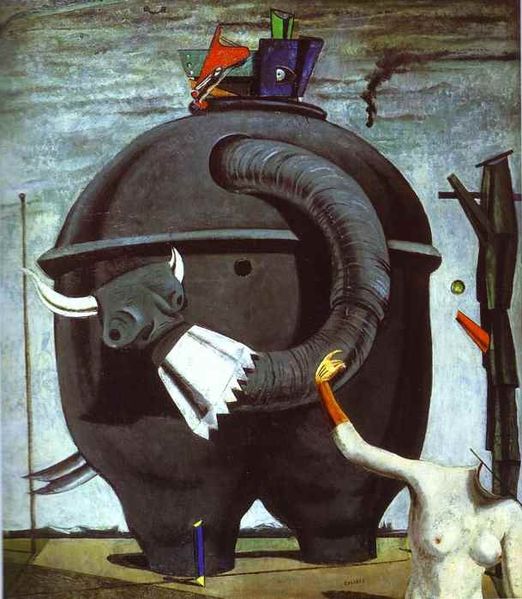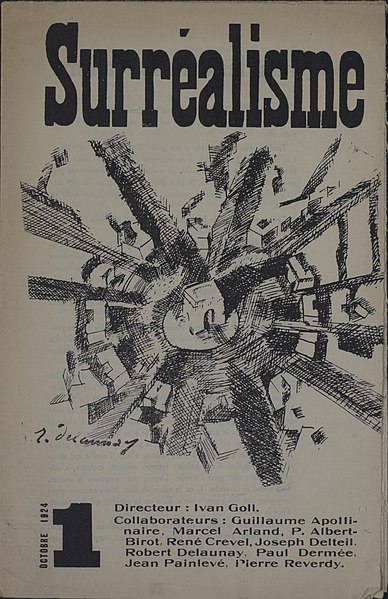Paul Nash was a British surrealist painter and war artist, as well as a photographer, writer and designer of applied art. Nash was among the most important landscape artists of the first half of the twentieth century. He played a key role in the development of Modernism in English art.
Spring in the Trenches, Ridge Wood, 1917 (1918), collection of the Imperial War Museum, London
Wire (1919), collection of the Imperial War Museum, London
The Ypres Salient at Night (1918), collection of the Imperial War Museum, London
Sunrise, Inverness Copse (1917), collection of the Imperial War Museum, London
Surrealism is an art and cultural movement that developed in Europe in the aftermath of World War I in which artists aimed to allow the unconscious mind to express itself, often resulting in the depiction of illogical or dreamlike scenes and ideas. Its intention was, according to leader André Breton, to "resolve the previously contradictory conditions of dream and reality into an absolute reality, a super-reality", or surreality. It produced works of painting, writing, theatre, filmmaking, photography, and other media as well.
The Treachery of Images, by René Magritte (1929), featuring the declaration "Ceci n'est pas une pipe" ("This is not a pipe")
Max Ernst, The Elephant Celebes, 1921
Cover of the first issue of La Révolution surréaliste, December 1924
Yvan Goll, Surréalisme, Manifeste du surréalisme, Volume 1, Number 1, October 1, 1924, cover by Robert Delaunay








